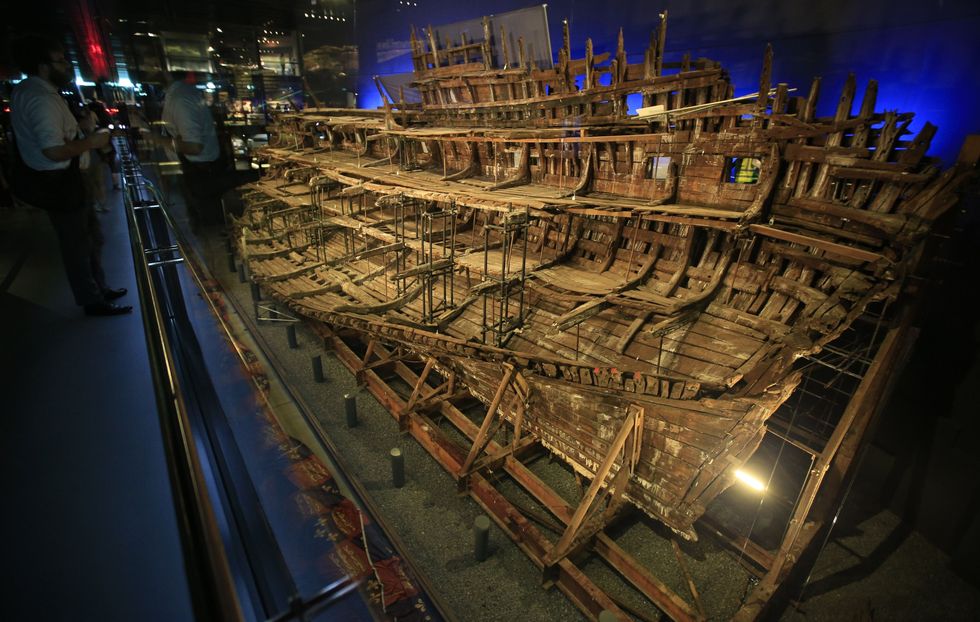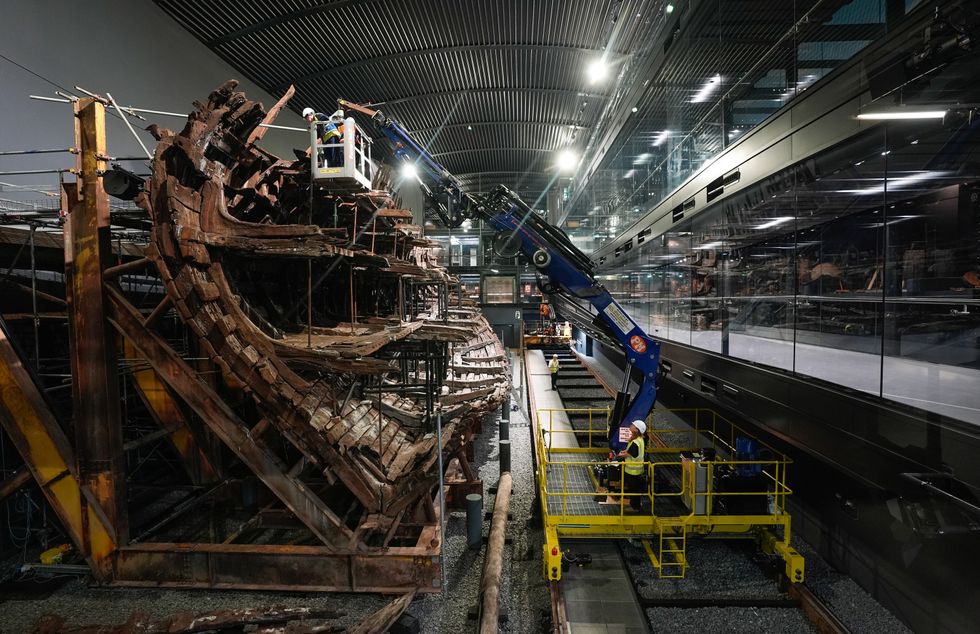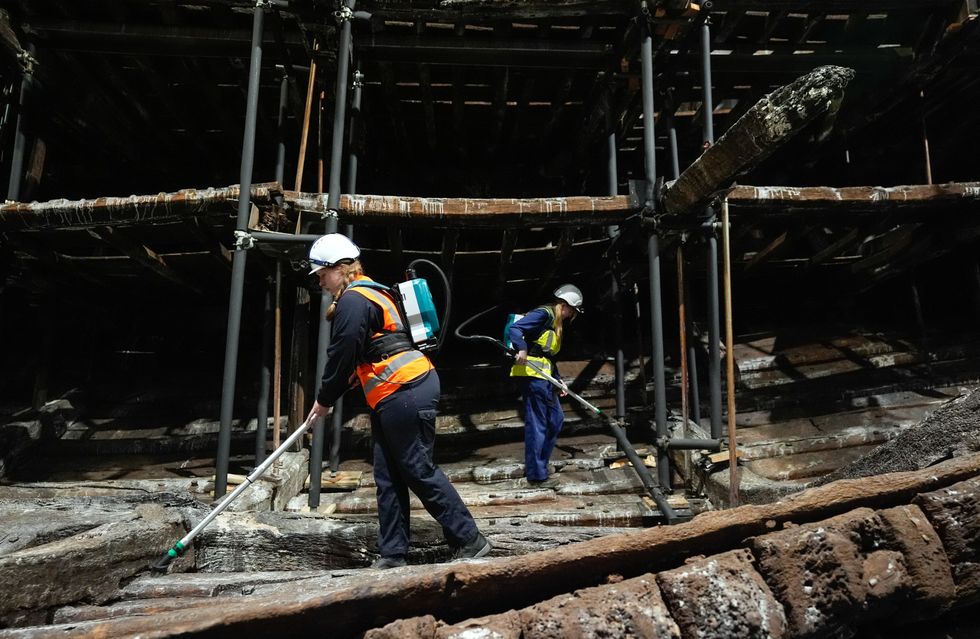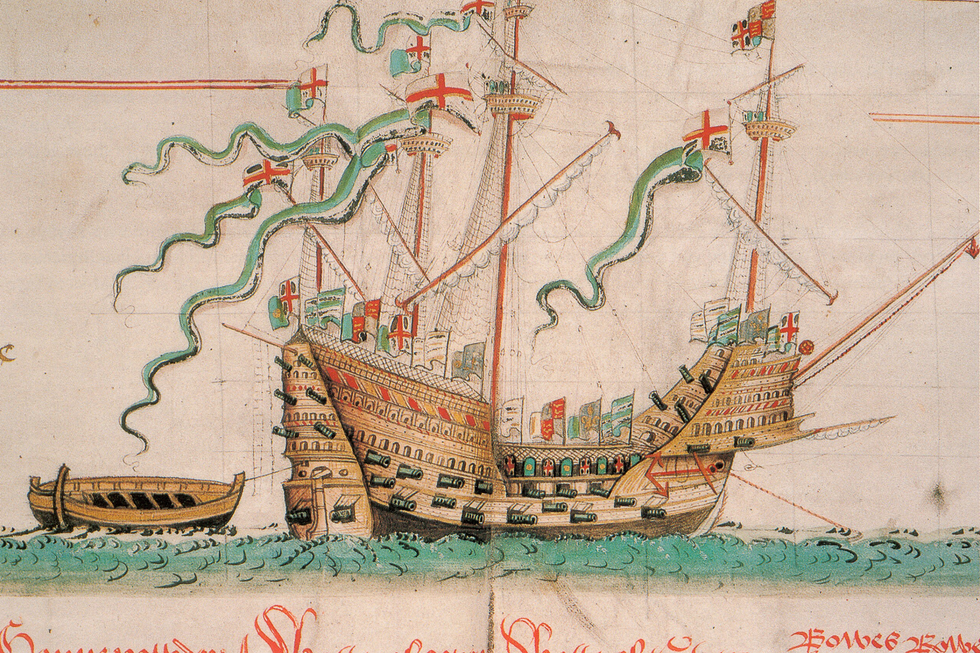Researchers working on the 500-year-old wreckage of the Mary Rose have uncovered fresh insight into what life was like for its crew.
The Mary Rose was one of the largest warships in King Henry VIII’s Tudor navy – and now, scientists are using evidence from its wreck to research how someone’s collarbone changes depending on whether they are left- or right-handed.
The ship had sunk in July 1545 during a battle against the French in the Solent – the strait which runs between the Isle of Wight and mainland Britain.
And recent tests on well-preserved bones from the ill-fated warship have revealed eye-opening findings about the crew’s lifestyle and bone chemistry – which could bring a knock-on benefit to modern medical research.

The Mary Rose stands on display in Portsmouth
PA
Researchers analysed collarbones from 12 men who perished aboard King Henry VIII’s favourite vessel.
The study, published in the journal PLOS One, sheds light on age-related changes in bones, as well as the impact of Tudor-era on-board work on skeletal development.
In 1982, the hull, along with 19,000 artifacts and the bones of 179 crew members, were excavated from the seabed – many of which are now on display at the Mary Rose Museum in Portsmouth.
Researchers continue to study the recovered items and human remains to uncover details about the identities and lifestyles of the Tudor-era crew.
MORE LIKE THIS:

Scientists are using evidence from its wreck to research how someone’s collarbone changes depending on whether they are left- or right-handed
PA
The study, led by Dr Sheona Shankland from Lancaster University, used a non-destructive kind of chemical analysis called Raman spectroscopy to analyse the collarbones.
Her team were looking into ageing and evidence of “handedness” – or which hand the crew members naturally favoured.
They found that mineral content in bones increases with age, whilst protein content decreases.
These changes were most noticeable in the right collarbones, indicating a preference for right-handedness among crew members.

Pictured: Staff painstakingly clean the wreck of the Tudor warship in its dry dock
PA
Dr Shankland said: “As individuals from this time would have been forced to be right-handed, as left-handedness had negative associations in medieval England, we could assume this difference in the right side was due to handedness.
“Advancing our knowledge of bone chemistry is crucial for understanding how our skeletons age and how medical conditions effect the bones.”
Her and her team’s research could further enhance our understanding of fracture risks and conditions like osteoporosis and osteoarthritis, which are common in ageing populations.

The findings from the Mary Rose study could have significant implications for modern medical research
PUBLIC DOMAIN
The unique preservation of the bones, due to the oxygen-free environment created by sediment covering the wreck, allowed for reliable investigation of bone chemistry.
Richard Madgwick, a professor in the School of History, Archaeology and Religion at Cardiff University, has heaped praise on the research.
Though he was not involved in the current study, he had previously researched other aspects of the remains.
Madgwick told CNN: “Biomechanical aspects of these strenuous, repeated tasks have long been understood, but the chemical variation and contrasting changes in mineral and protein components are much more poorly understood.
“The study has ramifications well beyond the Mary Rose.
“Its novel, high-resolution method provides a new approach for gaining insights into human lifeways, occupations and the stresses endured in the past – crucially, without any destruction of the invaluable archaeological remains.”